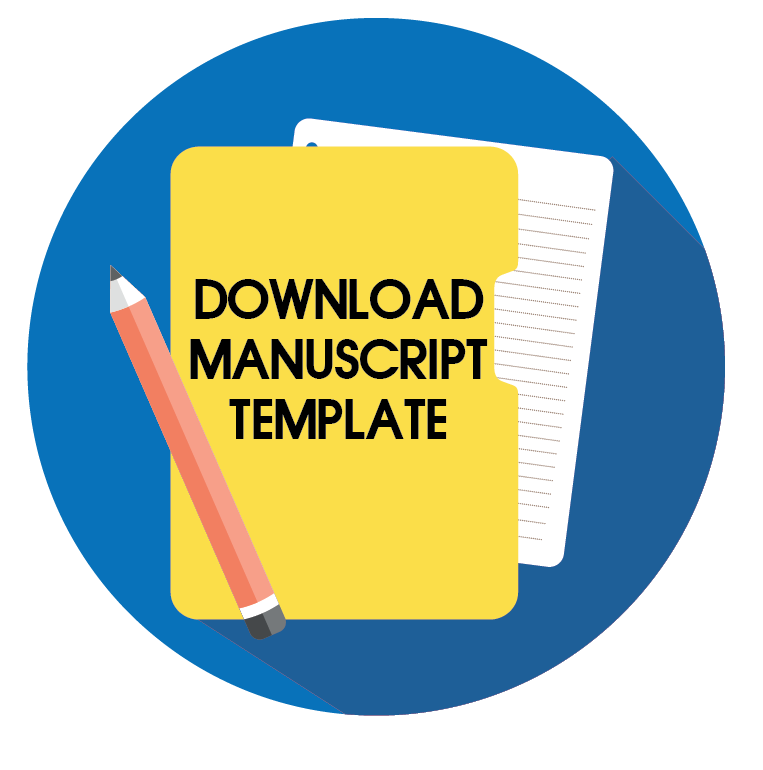Developing module of digital communication for professional contexts
Abstract
This study aims to develop digital communication module that can be used by the general public for professional communication contexts. The module has been developed using the Define, Design, Development, Dissemination (4D) model: Define includes determining a digital communication platform along with the goals and etiquette needed; Design includes making a blueprint for the module; Development includes the development of the module as a whole by involving expert judgment; then Dissemination includes dissemination/publication of the module. From the Define and Design stages, the initial design of the module is obtained. Expert assessment at the Development stage shows that the module design is useful for audiences and is appropriate for dissemination with minor improvements for further dissemination in a form of a book at the Dissemination stage.
Keywords
Full Text:
PDFReferences
Amar, M. D. (1986). Komunikasi dan Pidato. Alumni. https://opac.perpusnas.go.id/DetailOpac.aspx?id=25587
Assidiqi, M. H., & Sumarni, W. (2020). Pemanfaatan Platform Digital di Masa Pandemi Covid-19. 3(1), 298–303.
Bharwani, S., & Mathews, D. (2021). Post-pandemic pressures to pivot: Tech transformations in luxury hotels. Worldwide Hospitality and Tourism Themes.
Brown, P., & Levinson, S. C. (1987). Politeness: Some universals in language usage. Cambridge University Press.
Chagovets, A., Chychuk, A., Bida, O., Kuchai, O., Salnyk, I., & Poliakova, I. (2020). Formation of Motivation for Professional Communication among Future Specialists of Pedagogical Education. Romanian Journal for Multidimensional Education/Revista Romaneasca Pentru Educatie Multidimensionala, 12(1).
Chrisnatalia, S. G., & Rahadi, D. R. (2020). KOMUNIKASI DIGITAL PADA PEMBELAJARAN SECARA DARING DIMASA PANDEMI COVID-19. Jurnal BONANZA: Manajemen dan Bisnis, 1(2), 56–65. https://doi.org/10.47896/mb.v1i2.289
Danet, B. (2020). Cyberpl@ y: Communicating online. Routledge.
Dimbleby, R., & Burton, G. (2020). More than words: An introduction to communication. Routledge.
Effendy, O. U. (2003). Ilmu, teori dan filsafat komunikasi. Bandung: Citra Aditya Bakti, 200.
Fuller, R. (2020). Human-computer-human interaction: How computers affect interpersonal communication. In D. L. Day & D. K. Kovacs (Eds.), Computers, Communication and Mental Models (1st ed., pp. 11–14). CRC Press. https://doi.org/10.1201/9781003072171-2
Gunasekeran, D. V., Chew, A., Chandrasekar, E. K., Rajendram, P., Kandarpa, V., Rajendram, M., Chia, A., Smith, H., & Leong, C. K. (2022). The Impact and Applications of Social Media Platforms for Public Health Responses Before and During the COVID-19 Pandemic: Systematic Literature Review. Journal of Medical Internet Research, 24(4), e33680.
Jiang, X. (2020). Digital economy in the post-pandemic era. Journal of Chinese Economic and Business Studies, 18(4), 333–339.
Khazim, D., & Lase, D. (2020). OPTIMASI KOMUNIKASI DIGITAL BAGI FREELANCER & UMKM DI TENGAH PANDEMI COVID-19. Jurnal Abdimas Mutiara, 1(2), 131–137.
Leech, G. N. (2014). The pragmatics of politeness. Oxford University Press.
Liu, D., Baumeister, R. F., Yang, C., & Hu, B. (2019). Digital communication media use and psychological well-being: A meta-analysis. Journal of Computer-Mediated Communication, 24(5), 259–273.
Makeeva, E., & Orlova, N. (2022). Electronic Etiquette during the Pandemic: Theory and Practice of Teaching. ARPHA Proceedings, 5, 993–1006.
Mols, A., & Pridmore, J. (2021). Always available via WhatsApp: Mapping everyday boundary work practices and privacy negotiations. Mobile Media & Communication, 9(3), 422–440. https://doi.org/10.1177/2050157920970582
Munir, H. (2022). Reshaping Sustainable University Education in Post-Pandemic World: Lessons Learned from an Empirical Study. Education Sciences, 12(8), 524.
Nguyen, M. H., Gruber, J., Fuchs, J., Marler, W., Hunsaker, A., & Hargittai, E. (2020). Changes in Digital Communication During the COVID-19 Global Pandemic: Implications for Digital Inequality and Future Research. Social Media+ Society, 6(3), 2056305120948255.
Nunan, D., & Carter, R. (2001). The Cambridge guide to teaching English to speakers of other languages. Cambridge university press.
Permatasari, A. N., Soelistiyowati, E., & Nugroho, V. T. A. (2022). Mobile Instant Messaging Communication Etiquette: Educators’ Voices and Point of View. PAROLE: Journal of Linguistics and Education, 12(1), 138–149.
Pratama, H., Azman, M. N. A., Kassymova, G. K., & Duisenbayeva, S. S. (2020). The Trend in using online meeting applications for learning during the period of pandemic COVID-19: A literature review. Journal of Innovation in Educational and Cultural Research, 1(2), 58–68.
Rohali. (2011). Kesantunan berbahasa sebagai pilar pendidikan karakter: Perspektif sosiopragmatik. Jurnal Pendidikan Karakter, 1(1), 74–97.
Thiagarajan, S. (1974). Instructional development for training teachers of exceptional children: A sourcebook.
Yuliawati, S. N., Hazma, & Bakhti, K. Y. (2020). The Characteristics of Language Politeness in Students’ WhatsApp Messages to Lecturers. Proceedings of the 4th International Conference on Arts Language and Culture (ICALC 2019). 4th International Conference on Arts Language and Culture (ICALC 2019), Solo, Indonesia. https://doi.org/10.2991/assehr.k.200323.058
DOI: https://doi.org/10.17509/invotec.v19i2.61190
Refbacks
- There are currently no refbacks.
Copyright (c) 2024 INVOTEC

This work is licensed under a Creative Commons Attribution-ShareAlike 4.0 International License.
This journal provides immediate open access to its content on the principle that making research freely available to the public supports a greater global exchange of knowledge.

This work is licensed under a Lisensi Creative Commons Atribusi-BerbagiSerupa 4.0 Internasional.




